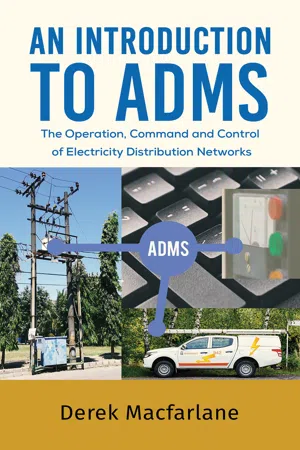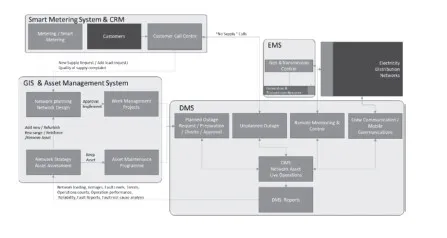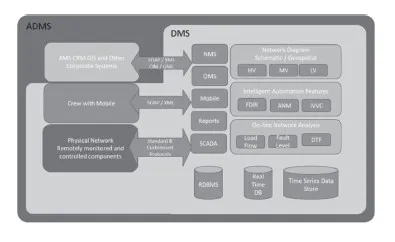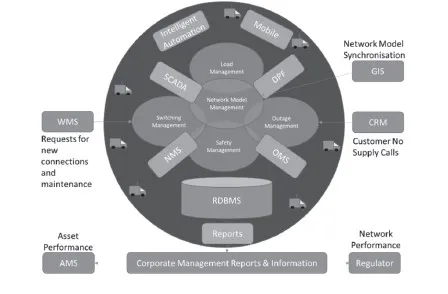
An Introduction to ADMS
The Operation, Command and Control of Electricity Distribution Networks
- 134 pages
- English
- ePUB (mobile friendly)
- Available on iOS & Android
An Introduction to ADMS
The Operation, Command and Control of Electricity Distribution Networks
About This Book
Advanced Distribution Management Systems are one of the first mature successful products from the information age. Over a 30-year period, a series of computer applications, all related to the real-time control of electricity distribution networks, were developed to meet the challenges of privatisation, deregulation and CO2 reduction. These have evolved into ADMS, which now plays a major role in adapting traditional electricity distribution networks to meet the challenges presented by the transition to renewable generation and reducing our carbon footprint. The purpose of ADMS is explained and component functions of ADMS are described. The ADMS relationship with other corporate IT investments is also discussed. Furthermore, the maintenance needs of ADMS are described and direction is given on how to extract maximum value from an ADMS investment.
Frequently asked questions
Information
1
Introduction
2
The Purpose of DMS
and ADMS
2.1 A Cautionary Note
2.2 Definitions of DMS and ADMS

- Responding to requests from project engineers to connect new assets to the network.
- Responding to requests from maintenance engineers to isolate items of plant for maintenance.
- Responding to unplanned events affecting the network, such as storm damage, network-initiated alarms and events.
- Interacting with transmission control.
- Ensuring the distribution network is operated safely and kept stable.
- Ensuring crews who operate switches or work on the network, do so with safety as the prime focus.
- Ensuring the public is kept safe from the potential dangers from electricity networks.
- Providing customers with the most reliable supply practicable.
- Providing customers with the quality and amounts of power on demand, within pre-agreed limits and within the standards.
3
DMS Functions and
Their Purpose

3.1 DMS
- The management of safety as crews operate switches on the network and as crews are set to work.
- Managing the network model as used in the control room in a manner that always reflects the actual state of the real network.
- Managing the unplanned outages and organising the response, investigation and recovery.
- Managing the operational work including requests for outages for new connections or for maintenance.
- Managing the loading of every component of the network as it attempts to meet the demand of customers.

processes and the ADMS functions
3.2 NMS
- Modelling the network.
- Updating that model in real time.
- The management of planned and unplanned switching on the network.
- The management of safety documentation.
- Manually initiated, remotely controlled automated switching by the control engineer.
- Manual switching, planned in advance, under direct command from control engineer to an onsite operative, who may be an engineer a linesman or other operationally qualified tradesman.
- Manual switching as an unplanned response to an unexpected network event.
- Intelligent automation driven switching triggered by an unexpected network event.
- Manual and or automatic network adjustment in response to dynamic network conditions such as voltage levels or loading constraints.
Table of contents
- An Introduction to ADMS
- About the Author
- Dedication
- Copyright Information ©
- 1 Introduction
- 2 The Purpose of DMS and ADMS
- 3 DMS Functions and Their Purpose
- 4 Data Storage in ADMS
- 5 The Interaction of DMS with Other Corporate IT Systems
- 6 Maintenance of DMS
- 7 Non Functional Requirements of DMS
- 8 Extracting Added Value from ADMS
- 9 ADMS Yesterday, Today and Tomorrow